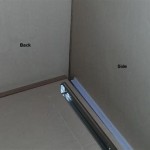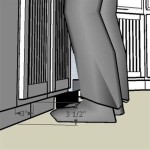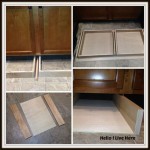Kitchen Glossary List: A Comprehensive Guide to Culinary Terms
Navigating the culinary world can be a delicious but daunting experience, especially when encountering a plethora of unfamiliar terms. From basic ingredients to complex techniques, a comprehensive kitchen glossary is an invaluable resource for aspiring and seasoned cooks alike. This guide aims to demystify common culinary terminology, providing clear definitions and examples to enhance your understanding and kitchen skills.
Essential Kitchen Equipment
A well-equipped kitchen is the foundation for culinary success. Understanding the functions and uses of common equipment is crucial for preparing meals with confidence. Here's a breakdown of some essential kitchen tools:
Chef's Knife:
A versatile knife with a broad blade, ideal for chopping, slicing, and mincing. It's considered the workhorse of the kitchen.Paring Knife:
A smaller knife with a short, pointed blade, perfect for peeling fruits and vegetables, removing stems, and making delicate cuts.Serrated Knife:
Designed for cutting through bread, pastries, and other items with crusts or delicate textures.Mixing Bowls:
Available in various sizes, mixing bowls are essential for combining ingredients, whisking batters, and preparing sauces.Measuring Cups and Spoons:
Accurate measuring is key to consistent results. Measuring cups are used for liquids, while measuring spoons are used for dry ingredients.Whisk:
A hand-held tool with wire loops used for blending ingredients, incorporating air, and creating smooth textures.Spatula:
A flat, flexible tool with a thin blade, used for flipping, spreading, and scraping ingredients.Cutting Board:
A protective surface for chopping, slicing, and dicing ingredients, offering a stable base for safe food preparation.Colander:
A strainer with holes used for draining pasta, vegetables, and other foods.Pot:
A large, deep container with handles, used for cooking soups, stews, and other dishes.Pan:
A shallow, flat-bottomed container with handles, used for frying, sauteing, and baking.
Culinary Techniques and Processes
Mastering culinary techniques is the key to unlocking exceptional flavors and textures. These methods facilitate the transformation of raw ingredients into delectable dishes:
Sauteing:
Cooking food in a small amount of fat over medium-high heat, resulting in a quick and flavorful sear.Braising:
A slow-cooking technique involving browning food in a pan before simmering it in liquid.Steaming:
Cooking food in a sealed container with its own steam, preserving nutrients and flavors.Roasting:
Cooking food in an oven with dry heat, ideal for poultry, vegetables, and meats.Baking:
Cooking food in an oven using dry heat, typically applied to pastries, breads, and desserts.Broiling:
Cooking food under direct heat, allowing for rapid browning and caramelization.Grilling:
Cooking food over direct heat, using a grill or pan, creating char marks and smoky flavors.Boiling:
Cooking food in a liquid that is at or near its boiling point, used for pasta, eggs, and vegetables.Simmering:
Cooking food in a liquid at a gentle simmer, allowing for flavors to meld and ingredients to soften.
Common Culinary Terms
Understanding the language of the kitchen is essential for interpreting recipes and navigating the culinary landscape. Here are some common culinary terms and their definitions:
Al Dente:
An Italian term that refers to the texture of pasta when it is cooked to be firm and slightly resistant to the bite.Baste:
To spoon or brush liquid over food during cooking to keep it moist and flavorful.Blanch:
To briefly cook food in boiling water, then shock it in ice water to stop the cooking process and preserve color and texture.Caramelize:
To cook sugar until it melts and turns a golden brown color, creating a rich and complex flavor.Deglaze:
To add liquid to a pan after cooking protein or vegetables, scraping up the browned bits to create a flavorful sauce.Dice:
To cut food into small, cube-shaped pieces.Julienne:
To cut food into long, thin strips.Mince:
To finely chop food into very small pieces.Sauté:
To cook food in a small amount of fat over medium-high heat, resulting in a quick and flavorful sear.Sear:
To cook food quickly over high heat to create a browned crust, developing flavor and texture.Simmer:
To cook food gently in liquid just below boiling point, allowing flavors to meld and ingredients to soften.Zest:
The outer, colored layer of citrus fruit, used for flavoring dishes and garnishes.

Glossary Of Esl Cooking Terms Ittt

Kitchen Tools In English With Worksheets

Kitchen Voary List Of Appliances And Gadgets With Description Pictures A Plus Topper

Kitchenware Kitchen Voary Words With Pictures 7esl

Kitchen Voary List Of Appliances And Gadgets With Description Pictures A Plus Topper

Pin On Kitchen Voary

In The Kitchen Voary Interesting Utensils Cooking Verbs Eslbuzz

Kitchen Voary List Of Appliances And Gadgets With Description Pictures A Plus Topper

A Glossary Of 175 Common Cooking Terms In English 7esl

Kitchen Utensils Voary Words In English And Urdu Engrary
Related Posts








